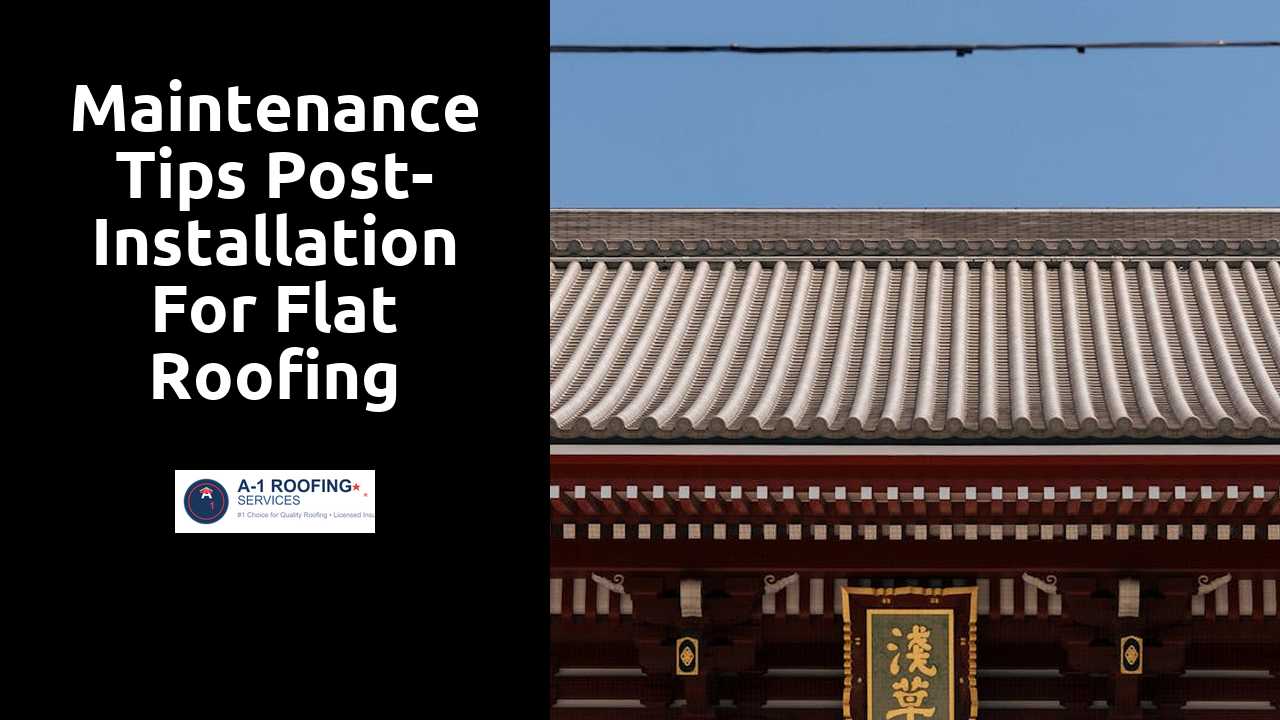
Maintenance Tips Post-Installation for Flat Roofing
Table Of Contents
Inspecting Roofing Membrane
Regular inspection of the roofing membrane is essential to maintain its integrity and performance. Examine the surface for any visible damage, such as bubbles, cracks, or discoloration. These issues can indicate potential underlying problems that need immediate attention. Additionally, check the seams and flashing, as these areas are often more susceptible to leaks and deterioration.
Seasonal changes can impact the condition of the membrane, so inspections should coincide with weather shifts. Pay special attention to areas where water pools, as standing water can accelerate wear and lead to leaks over time. Taking note of any debris, such as leaves or branches, is also important, as they can trap moisture and contribute to membrane deterioration if left unaddressed.
Their blog is a great resource for information.
What to Look For During Membrane Checks
Inspecting the roofing membrane regularly is crucial for early detection of potential issues. Look for signs of wear such as blisters, cracks, or seams that might be separating. Punctures or tears can develop from various sources, including debris accumulation or foot traffic. Assessing the overall condition of the membrane will help identify areas needing immediate attention.
In addition to physical damage, check for any water pooling on the surface. This can lead to significant problems, including leaks and structural damage over time. Pay attention to areas around roof penetrations like vents and drains. These spots are often vulnerable and may require extra vigilance to ensure their integrity remains intact.
Managing Vegetation on the Roof
Vegetation can significantly impact the overall health of flat roofing systems. Allowing plants, moss, or excessive debris to accumulate can lead to water retention, which promotes moisture-related issues and can compromise the roofing membrane. Regular inspections are crucial to identify any growth early. It’s essential to remove any organic matter promptly to minimize risks associated with decay and deterioration.
When maintaining greenery on your roof, safety should always be a priority. Ensure that you wear appropriate footwear with good grip to prevent slips and falls while navigating the surface. Utilize tools that do not damage the roofing material, like soft brooms or rakes. For larger trees or shrubs, it may be prudent to consult with a professional to manage growth safely and effectively without jeopardizing the integrity of the roof.
Safe Practices for Roof Landscaping
Landscaping on a flat roof can enhance its aesthetic appeal and contribute to better drainage, but safety should always be a priority when working in such an environment. Before beginning any landscaping project, ensure that the roof can support additional weight. Use lightweight soil and drought-resistant plants to minimize stress on the roofing structure. Always wear appropriate safety gear, including non-slip shoes and a harness if necessary, when working at heights.
When selecting plants, opt for those that require minimal maintenance to reduce the need for frequent access to the roof. Keep pathways clear to prevent slips and trips, and avoid placing heavy decor items that could pose a risk to both the roof and those working on it. Regularly check the integrity of the landscaping materials and the roof itself to catch potential issues early, ensuring both safety and longevity for your flat roof.
Addressing Punctures and Tears
Flat roofs can develop punctures and tears due to various factors such as heavy foot traffic, hail, or the expansion and contraction of materials with temperature changes. Identifying these issues early is crucial for preventing more extensive and costly damage. Regular inspections should include a thorough examination of the membrane, looking for any signs of distress. Areas exposed to direct sunlight or sharp objects are particularly vulnerable and should be prioritized during checks.
For repairs, it is essential to assess the size and severity of the damage. Minor punctures can often be patched using suitable materials specifically designed for the roofing membrane type. For larger tears, a more extensive repair may be needed, involving the application of additional membrane layers and secure adhesives. Following manufacturer guidelines is critical to ensuring a secure fix. While DIY repairs can be effective for minor issues, hiring professionals for significant damage is often the best choice for long-term solutions.
Steps to Repairing Common Flat Roof Issues
Flat roofs can experience various issues, including punctures and tears that compromise their integrity. In the case of a small tear, begin by cleaning the area around the damage with a suitable roof cleaner to ensure proper adhesion for the repair materials. Once the surface is clean, apply a roofing patch specifically designed for the membrane type. Make sure it extends at least several inches beyond the damaged section to create a strong seal. For punctures, a similar approach can be taken. However, it may be necessary to use a stronger, reinforced patch or even fiberglass fabric embedded in roofing adhesive for larger areas.
After the initial application, allow the repair materials to cure according to the manufacturer’s instructions. Once cured, inspect the repair site to ensure tight adhesion and no further signs of damage. It is important to monitor the patched areas regularly as seasonal changes may affect their durability. Regular maintenance checks will not only help identify any new issues early but also prolong the lifespan of the flat roof. Addressing small repairs promptly can prevent more significant complications and expensive repairs down the line.
Related Links
How Weather Impacts Flat Roofing InstallationStep-by-Step Guide to Installing Flat Roofs